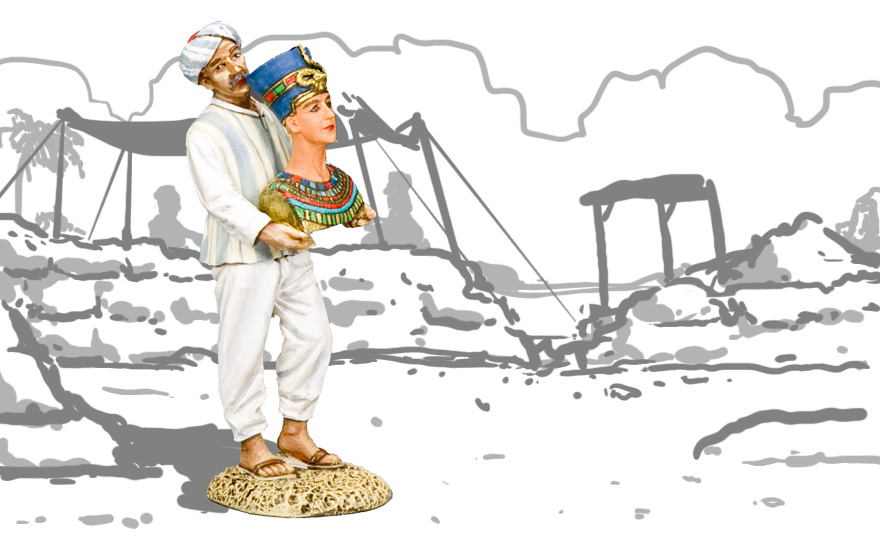The Traveling Queen
Nefertiti surely can find her place amongst the greatest queens of Egypt such as Cleopatra VI and Hatshepsut. She was one of the most important figures during the reign of her husband, the Pharaoh Akhenaten. Many representations of her done when she was alive survived to this day. The most famous of them is the Nefertiti Bust and currently on display at Berlin. Now, to compete with this controversial archeological find, we have the 1/30 scale version by King and Country: The AE091 - Carrying The Queen.
Born in 1370 BC, Nefertiti was the great royal wife of the revolutionary pharaoh Akhenaten, who imposed a global conversion to Atenism in Egypt. She had the reputation of being of a rare beauty and her name translates as "The Beautiful Woman has Come". Many depictions of Nefertiti show her being close to her husband and family, kissing Akhenaten and holding her kids. But her role was not only limited to being beautiful and taking care of the childrens. Nefertiti was a clever woman and was helping a lot in the administration of the kingdom. Some clues suggest that she was also promoted as co-regent by Akhenaten and might even have ruled on Egypt after the death of her husband. She would have served as a transitional Pharaoh, calming Egypt by reverting some of the drastic religious changes of her husband. To assume this new role, she would have changed her name to Neferneferuaten.
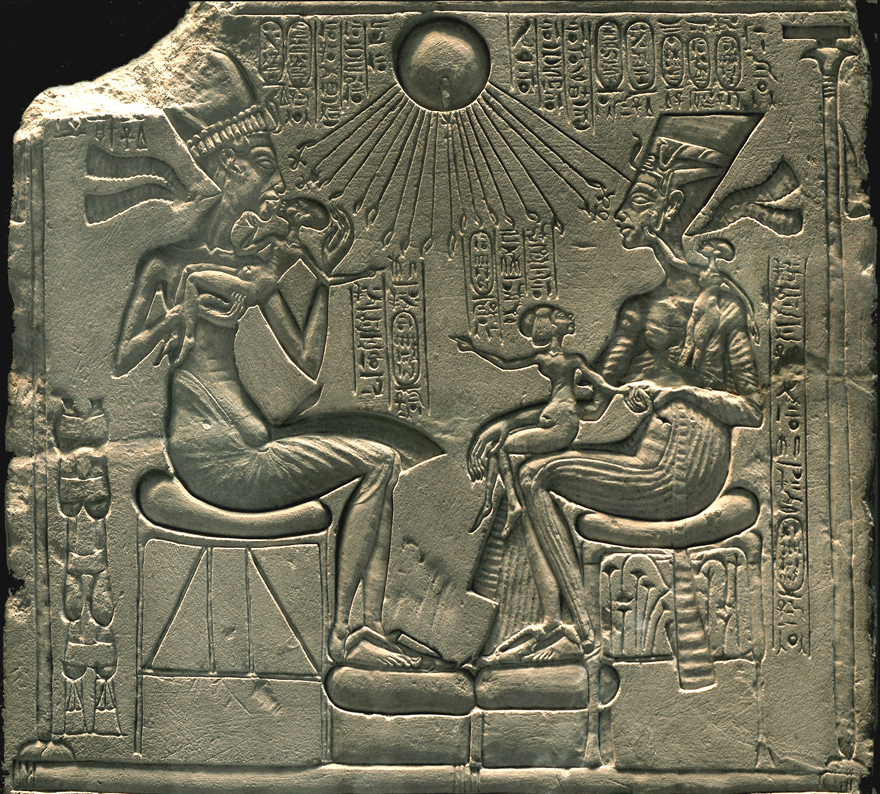
Nefertiti, Akhenaten and their daughters. Copyright LBM1948
The Nefertiti bust was found in Egypt in 1912 by the German archeologist Ludwig Borchardt while excavating the ruins of Thutmose's workshop, one of the greatest sculptors during the 18th dynasty. The bust was found with few other incomplete works, most of them being severely damaged by time. Amongst the ruins, original paint pigments and sculpting materials were found. However, this discovery is at the center of a diplomatic scandal as, at the time, important archeological discoveries made by foreigner archeologists were requested to stay in Egypt. So documents were falsified to hide the discovery and bring it to Germany. With the public display of the artifact at the Neues Museum of Berlin, Egypt quickly realized they were fooled and asked for the return of the bust since 1924. To this day, only Hermann Göring made a serious attempt to give back the bust in 1933, hoping to gain Egypt as an ally for Nazi Germany. But this idea was turned down by Hitler himself.
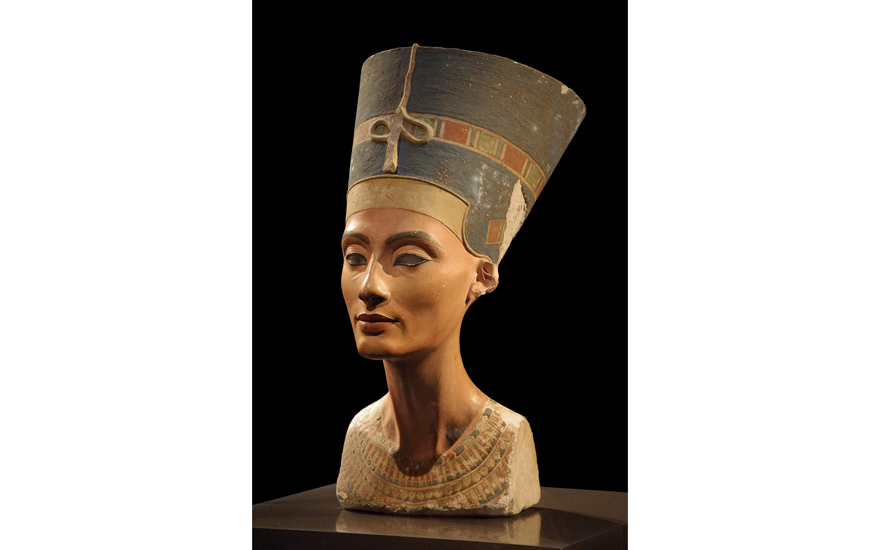
The Nefertiti Bust relocated to Germany since 1912.
The controversy doesn't stop here as some theorize the bust might even be a semi-fake. The fact that this bust alone was in near perfect condition while the other discoveries from the same site were highly damaged is a bit suspicious but can be explained by luck and how the workshop collapsed. This is why it was hypothesized that the bust was originally found damaged and incomplete. It was finished on the digging site in a contemporary style by using the pigments and materials found during the dig. The goal behind this exercise was to learn more from the ancient sculpting techniques. During a special visit of the site, the archeological experiment was seen by the Prince Johann Georg of Saxony who took it for a genuine artifact and Ludwig Borchardt did not want to offend the prince by correcting it. Borchardt's situation spiraled out of control into fame and it was impossible for him to rectify the situation. Oddly enough, this restoration theory would give Germany the right to own that piece, but this would put the Neues Museum of Berlin in an awkward position. As their most famous piece on display, the bust must be a genuine one. To this day, none of those theories were proven right. Unfortunately, the ambiguity regarding the acquisition of the Nefertiti Bust is enough to keep fueling the theories about the authenticity of that piece.
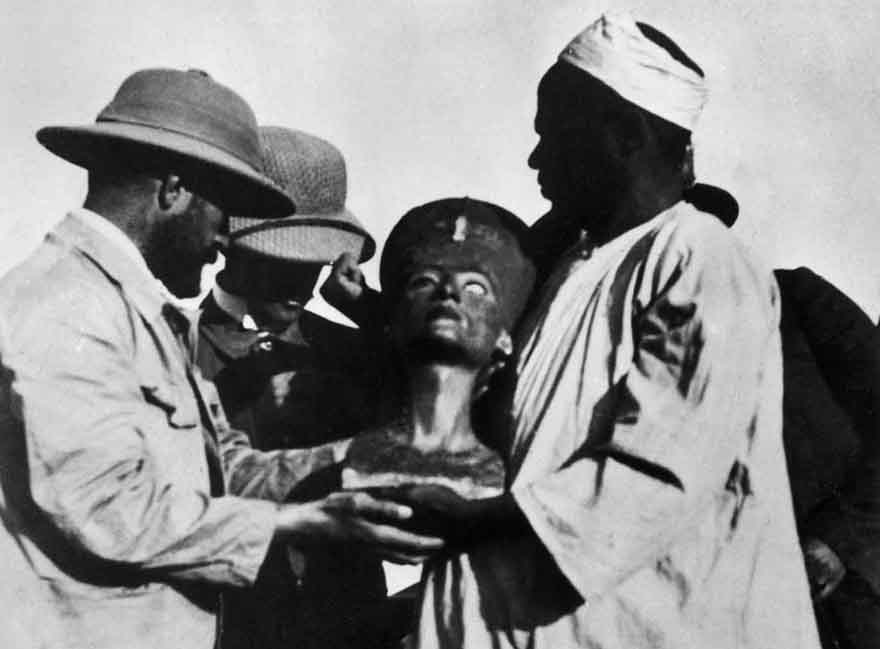
The Nefertiti Bust being shown at the Prince Johann Georg of Saxony in 1912 during a visit to the excavation site.
© Staatliche Museen zu Berlin, Vorderasiatisches Museum
The piece by King and Country reproduces the Nefertiti Bust as it was the day it was found according to the current consensus. An Egyptian worker carries the piece with his hands as carefully as possible. A good attention to details was taken to reproduce her long neck and massive broad collar. However, her characteristic blue crown differs from the real one by the addition of a snake figure and the fact that both eyes are still there. If the trend continues, those small differences might well inspire wild theories amongst the collectors!
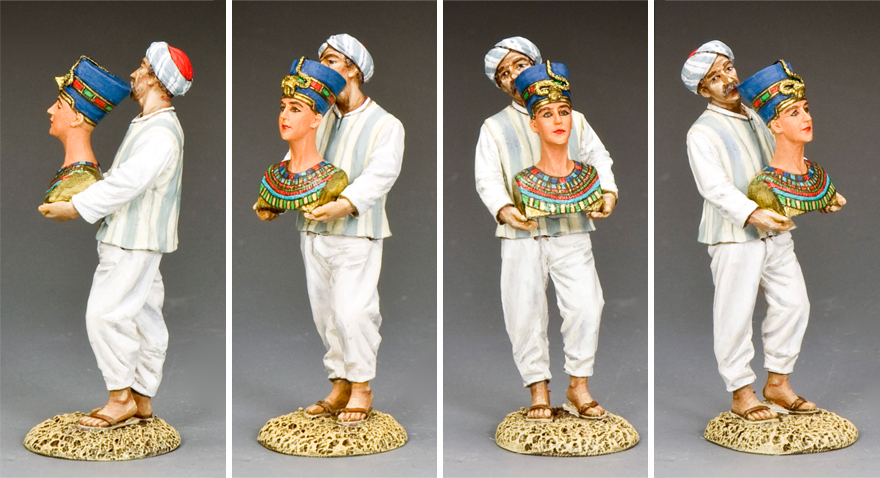
Whatever might be the truth behind the finding, legitimacy and authenticity of the Nefertiti Bust, the fact is that Nefertiti was a beautiful Queen and so is the bust on display at the Neues Museum and the mini version in the Ancient Egypt collection by King and Country. So it’s a good piece to own for the history and theories surrounding the finding. I now leave you with another classic of Ancient Egyptian music.

 Français
Français
